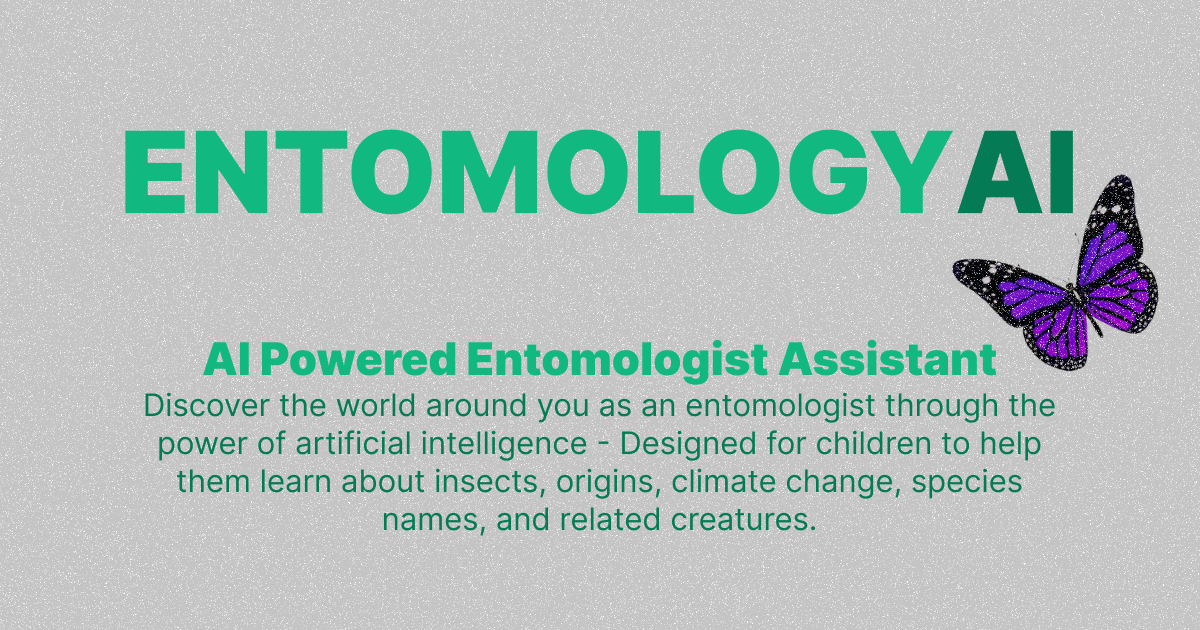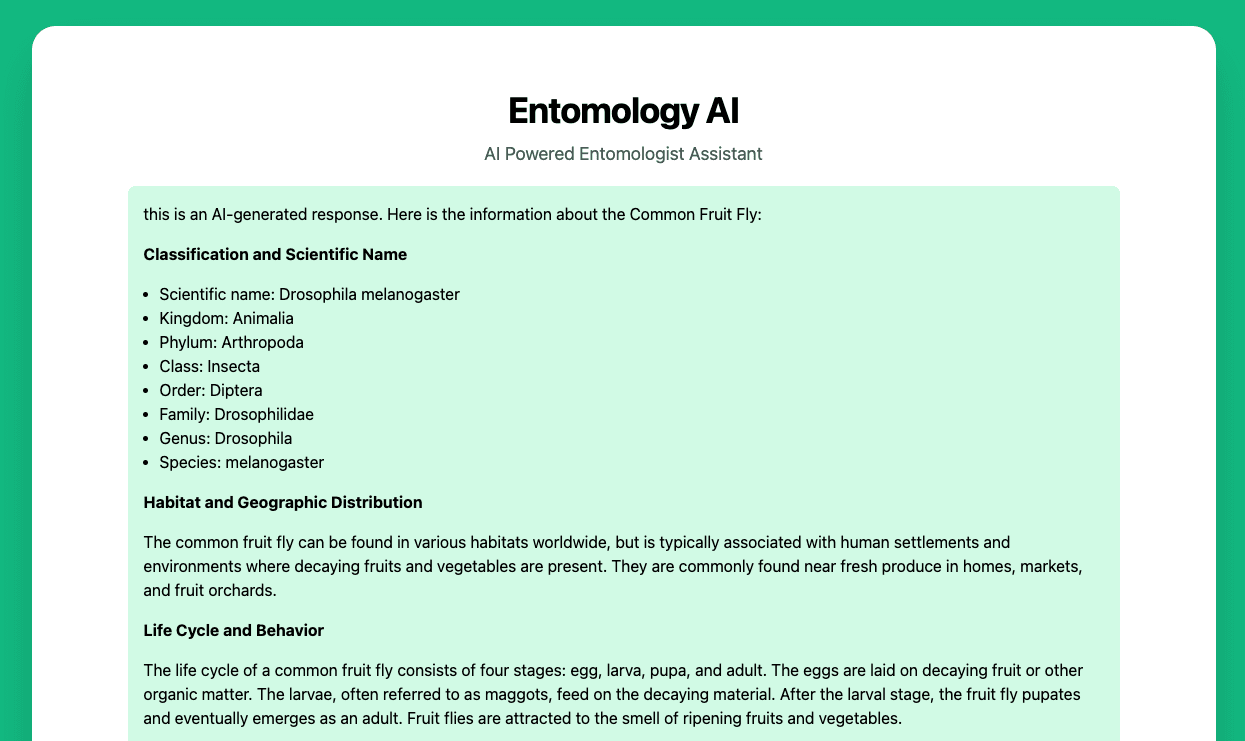The Future of Insect Study and Research
With the advancements in artificial intelligence, innovation permeates various industries and disciplines. One such area where AI is making impressive strides is entomology, the study of insects. Herein, we introduce Entomology AI, an AI-powered entomology assistant.
What is Entomology AI?
Entomology AI is an artificial intelligence system designed to aid entomologists, researchers, and even insect enthusiasts. It offers a multitude of functionalities, including insect identification, behavioral analysis, and assistance in analyzing research data.
How Does it Work?
At its core, Entomology AI employs cutting-edge image recognition and natural language processing algorithms. By processing insect images and textual data, it can identify a broad spectrum of insect species, provide intricate details about their behavior, habitat, and life cycle, and assist in parsing and understanding complex research data in the field of entomology.
Example Response From Entomology AI
Prompt Used: "Common Fruit Fly"
Classification and Scientific Name
- Scientific name: Drosophila melanogaster
- Kingdom: Animalia
- Phylum: Arthropoda
- Class: Insecta
- Order: Diptera
- Family: Drosophilidae
- Genus: Drosophila
- Species: melanogaster
Habitat and Geographic Distribution
The common fruit fly can be found in various habitats worldwide, but is typically associated with human settlements and environments where decaying fruits and vegetables are present. They are commonly found near fresh produce in homes, markets, and fruit orchards.
Life Cycle and Behavior
The life cycle of a common fruit fly consists of four stages: egg, larva, pupa, and adult. The eggs are laid on decaying fruit or other organic matter. The larvae, often referred to as maggots, feed on the decaying material. After the larval stage, the fruit fly pupates and eventually emerges as an adult. Fruit flies are attracted to the smell of ripening fruits and vegetables.
Lifespan
The average lifespan of a common fruit fly is around 40 to 50 days.
Diet
Common fruit flies primarily feed on decaying fruits and vegetables. They are attracted to ripe or overripe produce and are known to be especially attracted to bananas.
Do They Bite Humans?
Common fruit flies do not bite humans. They are mostly harmless and are more of a nuisance due to their presence in homes and the ability to reproduce quickly.
Role in Ecosystem
Common fruit flies play a role in ecological processes such as nutrient recycling and decomposition. They assist in breaking down organic matter, aiding in the natural decay process and returning nutrients to the soil.
Related Species
Drosophila simulans
Drosophila subobscura
Drosophila suzukii
Characteristics
The common fruit fly is small in size, measuring about 3 to 4 millimeters in length. They have a yellow-brown to tan-colored body with red eyes. Fruit flies have transparent wings and are capable of flying short distances.
Conservation Status
As a commonly found and widespread species, the conservation status of the common fruit fly is not of concern.
Interesting Facts
Common fruit flies have been extensively studied in genetic research, making them an important model organism.
They have a rapid reproductive cycle, with females capable of laying hundreds of eggs in their lifetime.
Their attraction to fermented fruits has made them useful in studying aspects of alcohol intoxication.

